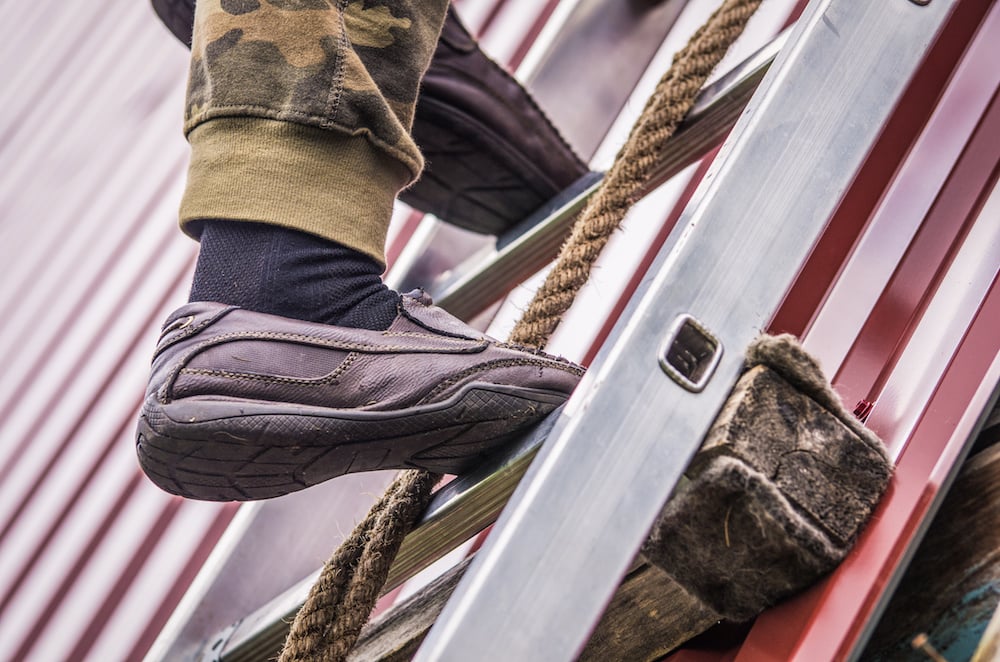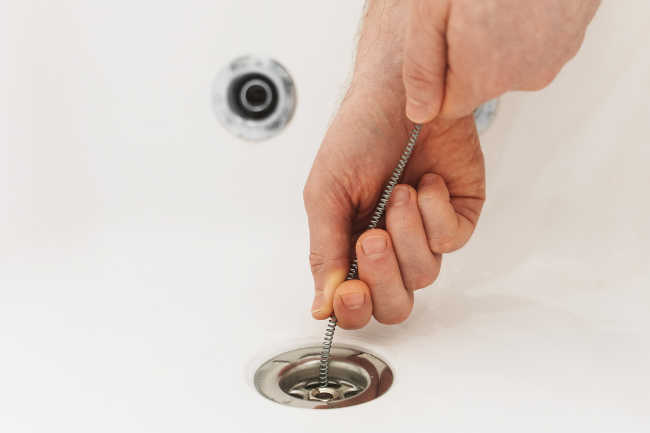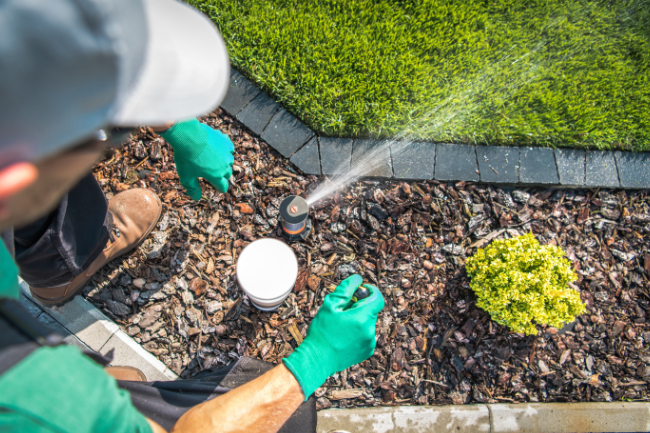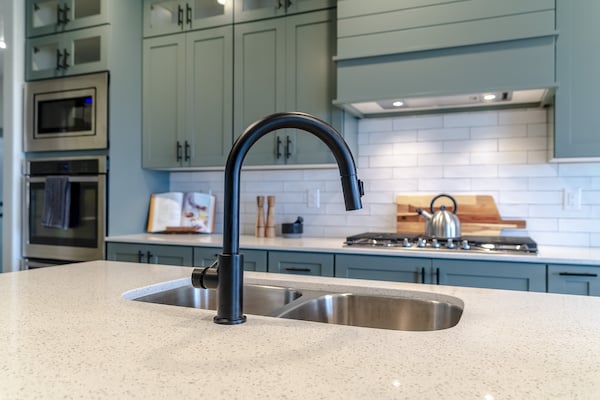7 Most Common DIY Accidents – and How to Avoid Them
Posted by Express Sewer & Drain Team on

Do-it-yourself projects continue to gain in popularity as people take on home projects to save money and beat stress (the pandemic, which has kept many people indoors, has also increased people's tendency to tackle DIY projects). DIY trend statistics show a recent 4.2% rise in various do-it-yourself home projects! In addition, more than 80% of survey respondents say they feel very self-accomplished following the completion of a project. Unfortunately, DIYers are typically not professionals, and projects can sometimes go wrong. In fact, it’s estimated that more than 200,000 people go to the hospital every year as a result of DIY injuries.
7 Most Common DIY Accidents
While plumbing projects tend to be less dangerous than some other types of DIY projects, accidents still happen. Here’s a look at the most common DIY accidents and how you can avoid them.
1. Falls
Across the U.S., ladder falls result in nearly 165,000 emergency room visits each year, with 300 deaths, according to the National Safety Council. The causes of these falls range the gamut from tree trimming to simply changing a light bulb. Of course, many people also use a ladder to get on the roof to unclog roof drains and gutters. This can lead to a fall or other dangers (there could be electrical wires near the roof or danger from nesting animals).
If you’re determined to get up on the rooftop, reduce your risk of a ladder-related injury by using the right sized ladder for the job, and always making sure the ladder is positioned on firm, level ground (if possible, call for a second hand to hold the ladder as well). Also, be sure that A-frame ladders are fully extended before you step on them and consider using a safety harness.
2. Cuts
It’s not uncommon to use a hacksaw when tackling DIY plumbing projects. Hacksaws may look flimsy, but they have the ability to cut through metal and plastic pipes, bolts, nuts, screws, and hardware. They can also cut through skin!
Dull saws and other cutting items force users to press down harder than normal, which makes users more likely to slip and cut themself. So, before you begin your next DIY project, make sure tools are properly sharpened or purchase new blades. You should also wear heavy-duty work gloves that provide some protection against nicks and surface cuts.
3. Eye Injuries
Your eyes are extremely vulnerable to dust, debris, and fumes that can be kicked up during a DIY project. This could happen when sawing, sanding, and so on. Some eye injuries happen during what appears to be the most harmless activity. For example, plunging the toilet. If you’ve poured a toxic cleaner into the toilet first when attempting to plunge the drain it could splash up into your eyes. Consequences of eye injuries include reduced vision, blindness, and even eye loss.
To avoid eye injury during DIY projects, always wear protective safety goggles (no, your regular prescription glasses or a pair of sunglasses are not enough to protect your eyes). Do a lot of DIY projects and hate wearing glasses beneath your goggles? You can get a pair of prescription goggles!
4. Slipping
According to the Occupational Safety and Health Administration (OSHA), injuries from slips and falls are the most common work-related injury. They’re also not uncommon when it comes to DIY accidents, especially involving plumbing where water is often a big factor. Whether working on an active leak or trying to prevent one, water is bound to accumulate on the floor, potentially leading to a slip and fall.
To avoid slipping, keep towels on hand to soak up water, or a mop or other cloth (absorbent powder for larger and more hazardous spills is also useful). You might also consider purchasing a non-skid mat. And remember, you could track water on your shoes to other areas of the home, so always wipe water away as you move about.
5. Insect Bites & Stings
Most DIY plumbing projects are performed indoors, so there’s little worry about insects. However, when a drain backs up, homeowners may take to their yards to see if patches of green are noticeably lush than others indicating a sewage backup.
When looking for signs of a broken sewer line, it’s possible to disrupt insects. Stings from bees, wasps, yellow jackets, or ants are painful and possibly deadly. Most ants and bees will avoid you if you leave them alone, but if you encounter more territorial species like yellow jackets and hornets, you may want to consider bringing in a professional.
6. Handling, Lifting & Carrying
Manual handling is the process of lifting, carrying, moving, lowering, or any type of moving of heavy objects. UNISON, a public service union, reports that one in three accidents in the workplace is caused by incorrect manual handling. DIYers are not immune to this danger. Let’s say you’re replacing a sink – that can be quite heavy.
To execute perfect manual handling, always plan ahead. That means clearing a path for your intended locations and making sure it’s clear of obstructions that could get in your way. You’ll also want to consider posture: Pick up heavy items in a balanced position, with your feet shoulder-width apart. Lower yourself with your knees to pick up the item. When putting the item in place, reverse how you lifted it.
7. Burns
Although you may be working with the plumbing, you may encounter wiring. Of course, water and electricity don’t play well together. Every year, a half-million people nationwide seek medical attention for burns, according to the National Institute of Health. Even wiring with a voltage as low as 50 volts can cause serious injuries if the electricity is applied to specific parts of the body.
If you’re digging into plumbing areas that may also house electric wiring, turn all electrical sources off. Consider wearing non-flammable clothing when working and use cutting tools that feature rubber grips (rubber is a poor conductor of electricity, therefore breaking any possible circuit between the current and your body).
Don't DIY, Call Express Sewer & Drain
Concerned about DIY accidents? Don’t go it alone! Express Sewer & Drain can tackle all your plumbing problems, and keep you safe! Express Sewer & Drain in Sacramento is here for you. We’re always standing by to handle your residential or commercial plumbing emergencies or for routine plumbing maintenance.
Topics: DIY, Drain Cleaning and Repair, Plumbing Tips







